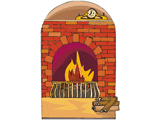Harold, my remark was due to Gwynne's statement that in any battle
with the Comanches, the whites had to fight to the death, as surrender
was not an option. It implied that all battles ended in victory or
death, whether immediate or by torture. Yet there were occasions when
the Indians simply abandoned a battle.
Ahh, ANNIE's second link is color-coded. Follow the yellow 'road'
to trace the Indian history. From the white view of what was important, of course.
ELLA, I wondered, too, why the Comanches didn't eat fish. As for
wild game, I don't imagine there was a great deal available out on
those plains. Rabbits and prairire dogs, maybe
How fortunate you were, SHEILA, to have a great-grandmother that
lived that long and that alert. I well remember the stories my
grandmother told me, but I only had one g-grandfather survive to an
age where I could meet him. He was still strong and active, raising
goats on a small farm.
ABERLAINE, we did study American history, but information about
particular states only came up when it influenced the national history.
The rangers were a motley lot. In appearance, they could hardly have
been reassuring. Some of the names are familiar to me, though.“Bigfoot” Wallace and “Allligator” Davis are figures of the local folklore.
It is John Coffee Hays who truly captures the imagination, tho’. A
remarkable young man, and a most appealing character. I would dearly love to see his story ,…an accurate, true-to-life version…on film.
Properly done, it would be a classic.
That is a most intriguing link, CALLIE. I wish I had more time to
peruse it. Minnie Caudle was a very pretty girl, wasn't she? And it's
good to see Banc Babb lived to an old age.
